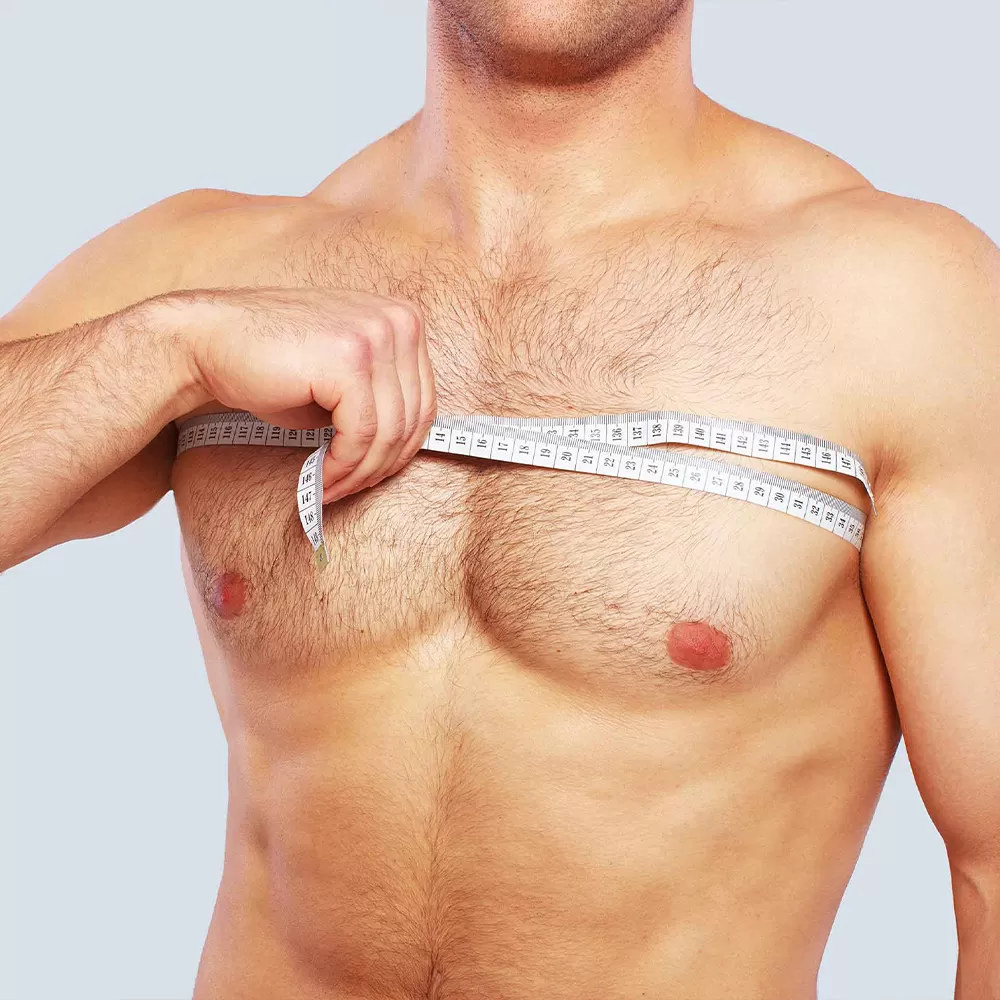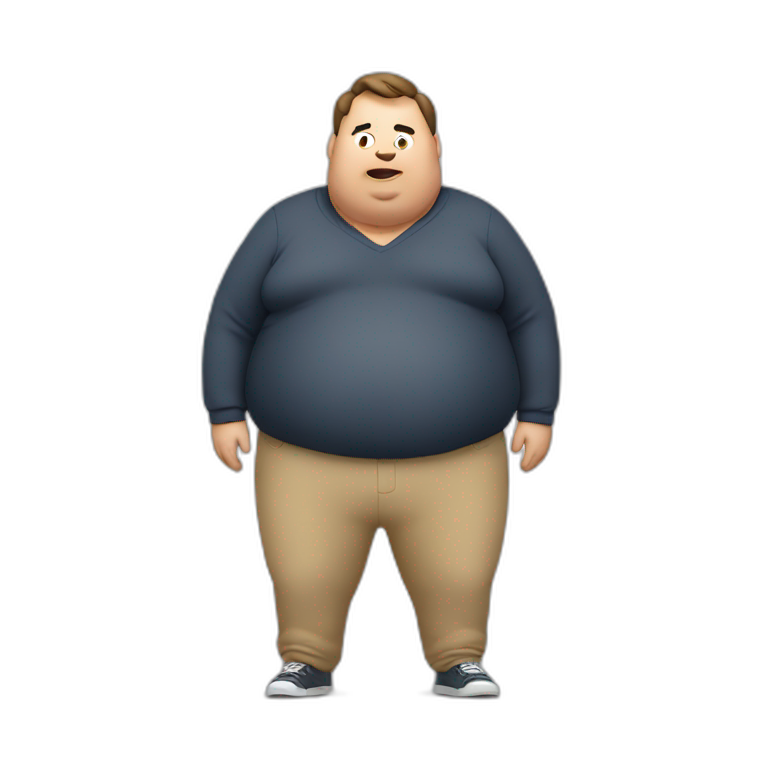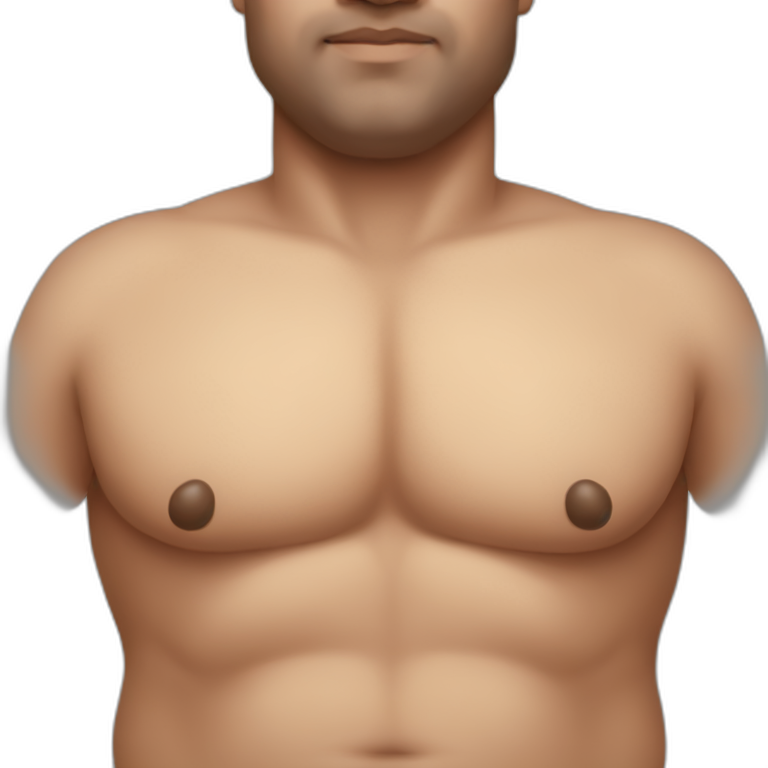Table of Contents
ToggleHow to Lose Chest Fat:
How would you like to reduce the chest fat? Do you want to know an easy way how to get rid of it? Most of you, for sure, will have more confident feelings coupled with good health once you reduce it. That is true. Well, now, you know how easy it will be when you learn the proper ways of doing it. For this, let’s have a discussion about how-to tips to get rid of excessive chest fat through its simple steps easy tricks, and tips here in this guide.
Knowing Chest Fat Before
- we talk about how to reduce chest fat, let’s understand what chest fat is. Chest fat is the extra fat around the chest area. Both men and women can have chest fat. For men, chest fat can sometimes be called “man boobs” or “gynecomastia.” For women, chest fat can make the chest look less firm. Reducing chest fat is possible with the right approach.
Why Does a Person Develop Chest Fat?
There are a myriad of reasons why people tend to grow chest fat. Understanding their cause is often the remedy to reducing the size of fat on the chest. Here is a list of causes as to why they get chest fat:
- Poor diet: A bad diet is typically a source of chest fat. Foods rich in high calories, soft drinks full of sugar, and foods bought at speedy food places add to chest fat.
- Lack of Exercising: One is likely to have chest fat if he or she does not get enough exercise. Since the body does not move around much, it tends to store more fat, which then appears as chest fat.
- Genetics: In some cases, chest fat is determined by genetics. This means that there is a history of the condition in your family. Although you cannot change your genetics, you can still reduce your chest fat.
- Hormones: Hormones are another reason why one may have chest fat. In men, the imbalance of hormones leads to the appearance of more chest fat.
Diet to Lose Chest Fat
One of the best ways to reduce chest fat is through improvement in diet. Diet plays a big role in reducing chest fat. To reduce chest fat, one needs to eat healthier foods. Let’s look at some diet tips to help reduce chest fat.
3.1 Eat More Protein
One other key nutrient when wanting to reduce chest fat is proteins. It helps increase your muscle size, therefore assisting in reducing your chest fats. Among good sources of proteins, we include:
-
- Chicken
-
- Fish
- Eggs
- Beans
- Nuts
- Proteins eat into body fats.
- Therefore eating enough proteins help reduce body fat.
3.2 Refrain from Sugary Foods
-
- Sugars can make it hard to lose chest fat. Consuming foods that contain a lot of sugar will result in the accumulation of excess fat in the body, including chest fat. One should avoid sugary drinks like soda and juice. Drink water instead. Water helps in losing chest fat because it has no calories.
3.3 Eat Healthy Fats
Not all fats are bad. Some fats may help lose chest fat. These types of fats are known as “healthy fats.” Healthy fats are available in the following food items:
-
- Avocado
-
- Olive oil
-
- Nuts
-
- Salmon fish and other such types
-
- Healthy eating of fats can make you more full for longer periods that can stop you from bingeing on junk food leading to reduced chest fat.
3.4 Focus on Whole Foods
Whole foods are those that experience less processing. They also happen to be healthier for your reduction of chest fat. In fact, whole foods include fruits and vegetables, lean meats as well as whole grains. To reduce chest fat, whole foods are excellent since they contain fewer calories while being rich in nutrients.
Exercises to Help in the Reduction of Chest Fat
It is very essential for exercise to help minimize the chest if this is one of the goals. Some of the exercises to use for the bust of fat are many, so let’s face a few.
4.1 Push-ups
Push-ups help in reducing fats in the chest. As a workout, it works your pectoral muscles, then helps you burn the fats down. You perform a push-up by going into a plank position with your hands, lowering your whole body, and then rising back up. Push-up exercises daily will reduce this chest fat.
4.2 Bench Press
The bench press is one of the exercises that burn the most chest fat. A bench press is a body exercise that works out your chest with the help of weights. If you don’t have weights, you can use any heavy object in your home. Thus, performing the bench press will allow you to lose chest fat over time.
4.3 Chest Fly
Another exercise that can be applied for chest fat is the chest fly. To do the chest fly, lie down on a bench or mat, grasp your hands with weights, and then outstretch your arms on each side of your body. Now, bring your arms together again. This exercise may decrease chest fat by enhancing chest muscles.
4.4 Dumbbell Pullover
The dumbbell pullover is a great exercise in burning chest fat. Lay down, take a dumbbell in both hands and bring that dumbbell from above the head to the chest. That exercise works the chest and tends to burn the fat deposited on the chest.
5:Cardio to Reduce Chest Fat
Cardio exercises are any exercises that increase your heart rate. Cardio is fabulous for burning calories, which can further help to reduce chest fat. Here are some cardio exercises that can help reduce chest fat.
5.1 Running
Running is one of the most effective cardio exercises to lose chest fat. While running, you burn many calories. Running helps reduce fat in all body parts, including chest fat. You should try to run for at least 20-30 minutes every day to help lose chest fat.
5.2 Biking
Biking is another fun way of burning chest fat. Biking can be done either in the open or indoor cycling machine. Biking strengthens the leg muscles, but this process is good in reducing the chest fats too. You can bike for half an hour a day to reduce chest fat.
5.3 Jumping Rope
Jumping rope is the easiest exercise. This helps cut down the chest fat. It is a very good aerobic exercise. The more calories one burns, the more it helps burn chest fat. So, it is always advised to attempt jumping rope for sometime every day.
5.4 Swimming
Swimming is an excellent full-body workout. It burns the fat from your chest as all the muscles in your body get worked. Swimming is also joint-friendly so it’s great for people looking to reduce their impact on a workout. Swim for 20-30 minutes a few times a week to reduce chest fat.
Lifestyle Changes to Help Reduce Chest Fat
In addition to diet and exercise, some changes in lifestyle can help the reduction of chest fat. Here are a few more tips to help you reduce chest fat even faster.
6.1 Get Enough Sleep
Getting enough sleep is very important in helping decrease chest fat. Poor sleep will make the body store more fat and possibly chest fat. For one to reduce chest fat, get enough rest of 7-8 hours per night.
6.2 Reduce Stress
High levels of stress can cause high chest fat. Thus, whenever you feel anxious, your body reacts to this by secreting what it calls cortisol. However, the higher levels of cortisol in your system mean one thing: fat deposition around and across the chest.
- In these findings, try to get rid of most of the anxiety through relaxation techniques by undergoing deep breathing or maybe meditating or becoming a serious yogi.
This involves drinking water whenever you desire to lose chest fat. Consuming water can facilitate a greater and more effective burning of fat within the body. Drink at least 8 glasses of water per day to support your body in reducing chest fat.
6.4 Avoid Alcohol
Alcohol can work against one when trying to lose chest fat. Since alcohol is rich in calories, that is an empty-calorie contribution to the body may lead to gaining weight and a higher tendency to increase chest fat. A person to try to get rid of chest fats should therefore minimize their intake of alcohol.
Constant Efforts Will Help Win the War of Losing Chest Fat
Most importantly, you would have to be constant. The fat loss in your chest will not happen overnight. You simply keep on eating healthy, exercising, and following all the helpful tips above. When you reach a point where you stay consistent, then you can start observing changes.
Cheers to Small Victories When Eliminating Chest Fat
- Reducing the fat in your chest requires a journey. It is really important to celebrate small wins along the way. Notice when clothes fit better or when you feel stronger. These wins can keep on motivating you to continue reducing that chest fat.
What Are Chest Exercises?
Chest exercises are the processes that help in building, strengthening, and toning the chest muscles, primarily the pectoral muscles. These muscles are also referred to as “pecs” and are located in the upper front part of the body. They are very important in many movements in the upper body.
A well-developed chest not only adds to the physical appearance but also enhances functional strength, helping with daily tasks, sports, and overall mobility. In simplest words, chest exercises comprise simple bodyweight exercises as easily as the more complex weight-lifting exercise as provided in the example below bench-press.
There are primarily two parts of the chest :
Pectoralis Major
The large fan-shaped muscle covers the vast area of the chest. Pectoralis Minor
It lies under the pectoral major, responsible for maintaining the movements of the shoulders stable.
Building and developing these muscles can make daily activities like lifting, pushing, or even just carrying objects easier to handle.
Strong chest muscles also promote overall upper-body strength, stability, and endurance. So let’s get into details, benefits, and ways for you to have that ideal chest through various techniques for you to achieve that great-looking chest.
Importance of Chest Exercises
The muscle will be developed, but, additionally, this exercise is also helpful in building the aesthetics of the chest. These are the top reasons why you must do exercises on your chest are:
- The upper body of muscle strength develops: These muscles help to support the shoulder arms and parts of the back of the human body. If these muscles are developed, it will make such actions easier to perform: lifting, pushing, and pulling movements.
- Improved Aesthetic Appearance: Chest exercises help work out a developed, muscular chest, giving an individual a more balanced and appealing physique. This can boost confidence and body image.
- Improved Posture: Chest exercises may help offset the effects of slumping or sitting for extended periods. If the upper body is developed equitably by doing a well-rounded workout with chest exercises, there might be less slumping or slouching.
- Strengthening the chest will also protect the shoulder joints and muscles around them. Chest exercises will improve muscle balance, which is the best way to reduce injuries, especially for sportsmen.
- Functional Movement Improvement: Strong chest muscles are important to carry out any pushing movements that occur either in a gym or even in daily activities. For example, if one requires opening up a very heavy door or moving large furniture, having strong chest muscles makes such activities less tiresome and manageable.
- In short, chest exercises represent fundamental exercises for physical fitness, rendering it both aesthetically attractive as well as functionally positive to the body. With athletic performance, upper-body strength, and healthy body mobility and movement, a person stands to gain much from regular strengthening of the chest region.
Benefits of doing chest exercises
There are numerous benefits to working regularly on chest exercises, The following are some of those considered to be at par:
- Increased Upper Body Power: Pectoral muscles are the ones that closely go with shoulders and arms thus increasing overall upper body strength. Chest exercise enables you to perform heavy lifting and workouts more challenging.
- Higher resting metabolic rate: The more the amount of large muscle groups, the larger muscles in the chest and even other parts of the body increase the resting metabolic rate; subsequently, you burn more calories even when resting. Thus it is useful for weight reduction or improving muscle tone.
- Well-toned muscles of the chest are utilized in sports such as swimming, boxing, tennis, and baseball. A swimmer requires chest strength to increase his strokes, while a boxer needs it to deliver a punch.
- Improved Balance and Coordination: Exercises for the chest, particularly those involving balance like push-ups and cable exercises, work the core and stabilizing muscles surrounding the shoulders, which have the effect of improving your general balance and coordination.
- Functional Strength: Chest exercises mimic the actions performed in everyday activities, such as opening the door, lifting boxes, and carrying bags. These actions become easy and impossible to injure when the chest muscles are strong.
- Benefits of Chest Exercises: Not only aesthetically pleasing but also contribute to health, improve daily activity, and give a functional basis to upper-body strength. The need for chest exercises cuts across athletes, fitness enthusiasts, or those seeking to maintain healthy lifestyles.
Types of Chest Exercises
Many of these chest exercises vary based on the level of fitness, their goals, and their purposes. Here’s a general overview of the most commonly performed chest exercises along with some of the required equipment, as well as which muscle each one targets.
- Push-ups: A traditional body-weight exercise that involves working several different muscles, including the chest, shoulders, triceps, and core.
- Bench Press: The bench is a very common exercise and one of the weight-training options for building mass and gaining strength in the chest area.
- Dumbbell Flyes: This is an isolation type of exercise. It would stretch and strengthen the outer chest.
- Incline Press: This exercises the upper chest, ideal for achieving a balanced, fuller appearance.
- Cable Chest Fly: It has continuous tension throughout the movement and is therefore excellent for building muscle endurance and definition.
- Dips: These exercises use body weight to exercise the chest, triceps, and shoulders. Dips particularly target the lower chest.
Each of the exercises mentioned above has different benefits and muscle engagement. Let’s see how each can be done correctly and safely.
How to Do Push-Ups for Chest Muscles
Push-ups are a simple bodyweight exercise that boosts strength to the chest, shoulders, and triceps. They are useful as no equipment is needed, thus apt for beginners and people with training.
Steps to perform a Basic Push-Up
Start in a high plank position with your hands spread wider than shoulder-width.
Your core should be tight as your whole body needs to be straight from head to heels.
Keep bending your elbows. Lowering till chest almost touches the floor,
Push back with straightening arms till your body starts from where it was placed to begin with
Variation of Push-Up
- Pushing up with knee: push-up with a knee at every step instead of the proper push-up since it eases out for beginners.
- Push up on an inclined plane: Position your palms on some kind of support like a bench it reduces its intensity and still helps in performing chest muscles.
- Decline Push-Ups: Use your feet on a platform to strike the upper chest and shoulders.
Benefits of Push-Ups
- Activates the Chest, Shoulders, and Core: Several muscles are used in one go with push-ups.
- No equipment is required: It is an all-purpose exercise that can be done anywhere.
- Functional strength and balance increase: Working the core will enhance balance
Bench Press for Bigger Chest
The bench press is one of the most versatile and potent chest exercises. To many, it is indeed the upper body strength test. This exercise is always done using either a barbell or a dumbbell. This also comes with varying angles such that a part of the chest could be attacked.
Basic Barbell Bench Press:
- Lie flat on the bench; ensure your feet are rooted on the ground.
- Grip the barbell slightly wider than your shoulder width apart.
- Bring the barbell off the rack and let it down slowly to your chest, right above the nipple line.
- Push the bar back up by extending your arms to the start.
Bench Press Variations
- Incline Bench Press: The bench is inclined at 30-45 degrees to concentrate on the upper chest.
- Incline Bench Press: This is set to an angle that focuses on the upper chest.
- Dumbbell Bench Press: The dumbbell allows for a greater movement range, thereby engaging your stabilizer muscles.
Benefits of Bench Press
Strengthens Chest Mass and Strength: Bench press is ideal for acquiring extreme muscle size.
Strengthens the Shoulders and Triceps: Other stabilizing muscles are recruited during bench press.
Allows Progressive Overload: You can increase weight progressively for continuous improvement.
Chest Fly for Chest Definition
The chest fly is a single-joint exercise designed to hit the outer chest by stretching and activating pectoral muscles. One can do it on the bench with dumbbells or a cable machine.
Performing Dumbbell Chest Fly
- Lie on a flat or incline bench with dumbbells in both hands, palms facing one another.
- Extend your arms over your chest, with elbows slightly bent.
- Lower the dumbbells in an arc to chest level where you feel a stretch in the chest muscles.
- Bring the dumbbells back together by contracting the chest to return to the starting position.
Variations of Chest Fly
- Incline Dumbbell Fly: Do this on an incline bench as it targets the upper chest
- Cable Fly: Using cables ensures constant tension during the movement, thus increasing muscle engagement
- Pec Deck Machine Fly: A machine that comes with guided movement thus perfect for beginners
Benefits of Chest Fly
- Targets the Outer Chest: The wide arc stretches and activates the outer part of the chest.
- It makes a person have flexibility and stretch as well, which improves one’s range of motion. Also, one can define muscles in this exercise.
- Develops Chest Definition: The incline bench press is best for defining the upper part of the chest.
8:Dumbbell Pullovers
This is a type of bench press that puts emphasis on the upper chest and provides fullness and balance to the pectoral muscles. This is achieved by angling the bench in order to shift the emphasis from the lower chest to the upper chest.
How to do an Incline Bench Press:
- Set the bench at 30-45 degrees.
- Lie back on the bench with your grip slightly wider than shoulder-width apart.
- Lower the barbell to the upper chest area.
- Extend the arms to press the barbell back to the starting position.
Variations of Incline Press
- Incline Dumbbell Press: More range of motion with this exercise and engages the stabilizing muscles.
- Smith Machine Incline Press: With the Smith machine, the controlled motion will help keep one in proper form, which is helpful for beginners.
- Close Grip Incline Press: Doing so with a close grip focuses some attention on the triceps, while the exercise affects the upper chest and triceps.
- Benefits of Incline Bench Press
- Develop Upper Chest: This exercise helps produce balanced looks for the chest.
- Develop Upper Body Power: The more developed the shoulders and upper chest is the more power you will build in lifting.
- Stabilize the Shoulders: Builds muscle mass around the shoulders to improve stability.
Cable Chest Fly for an Exercise that Creates Constant Tension on the Chest Muscles
The cable chest fly is another exercise for building constant tension on the muscles of the chest throughout a movement.
The angle and intensity can be changed on cable machines, so various parts of the chest can be trained.
Stand between two cable machines with a handle attached to each set at shoulder height or higher on the cable.
Hold the handles bring your hands together in front of your chest and squeeze your chest muscles.
Slowly return to the starting position while in control.
Cable Chest Fly Variations
High Cable Fly: This involves setting the cables above shoulder height, focusing on the lower chest.
Low Cable Fly: Set the cables below shoulder height, targeting the upper chest.
Single-Arm Cable Fly: Do the fly with one arm at a time to correct muscle imbalances.
Benefits of Cable Chest Fly
Constant Tension: The cable fly keeps tension on the chest muscles for a more intense workout.
Muscle Definition: This exercise is excellent for sculpting and defining the chest.
Chest Stability and Control: The cables engage the core and stabilize muscles, improving overall control.
Dips for Chest Strength and Definition
Dips are one of the best bodyweight exercises to work on the chest, triceps, and shoulders. The angle at which the body dips determines whether it’s focused on the chest or triceps. For the targeted chest, lean forward slightly in the direction of your body to emphasize the chest muscle.
How to do chest-targeted dips:
- Sit straight and hold onto parallel bars while your arms are straight
- Lean forward slightly, and bend your knees, pointing to the chest.
- Lower your body until your upper arms are parallel to the ground.
- Push yourself back up, straightening your arms and working your chest muscles.
Variations of Dips
- Weighted Dips: Wear a weight belt to add resistance and make the exercise more intense.
- Bench Dips: Use a bench to support your hands for a beginner-friendly variation.
- Assisted Dips: Use an assisted dip machine to gradually build up strength.
- Benefits of Dips
- Multi-group exercise for the chest, triceps, and shoulders
- Bodyweight Exercise: There is no need for heavy equipment in this exercise.
- Functional Strength and Endurance: Dips are an excellent exercise that increases overall upper-body strength
Safety Tips for Chest Exercises
Chest exercises are extremely intense, especially with the heavyweights. Here are some safety tips to keep safe and effective chest exercises
- Warm-up: Start with light cardio or dynamic stretching to get blood flow into your muscles.
- Use Proper Form: Focus on form, not heavy weights. It is especially important for a beginner. Poor form raises the risk of injury.
- Avoid Overtraining: Give time for your chest muscles to rest and recover. Rest between intense chest workouts is around 48-72 hours.
- Listen to Your Body: If you are experiencing pain, stop. Don’t push through because you may end up getting a very bad injury.
- Gradually Increase Weight: Progressive overload is the best way to gain muscles, but you need to increase the weight slowly so that you don’t strain.
How Frequently Do You Need to Exercise the Chest?
The number of chest workouts depends on the level of fitness and what you want to achieve. This is a general guide.
- For beginners, once per week would be enough to establish the foundation.
- Intermediate: Most individuals train two times a week with adequate time in between.
- Advanced: Trained individuals can train the chest three times a week, targeting various regions at each session.
- So long as the rest between sessions between chest workouts does your muscles good by repairing and building up.
Balancing Chest Workout Routine
Here’s one balanced chest workout routine on how to build up more muscle mass and strength. Then adjust your weights, sets, and reps to suit your abilities.
- Warm-up: do 5-10 min of light cardio and dynamic stretches
- Push-Ups : 3 sets of 15-20 reps.
- Flat Bench Press: 3 sets of 8-10 reps.
- Incline Bench Press: 3 sets of 8-10 reps.
- Dumbbell Flyes: 3 sets of 10-12 reps.
- Cable Chest Fly: 3 sets of 10-12 reps.
- Dips: 3 sets to failure (you can’t do anymore).
This is a workout routine that engages different parts of the chest and has both compound and isolation exercises to be the most effective.
Final Thoughts on Chest Exercises
Chest exercises are vital in building a balanced and strong upper body. Regardless of whether you’re working toward strength, appearance, or function, a consistent chest workout will surely bring you to your desired destination. Never forget proper form, begin with reasonable weight, and increase it over time as you become stronger.







